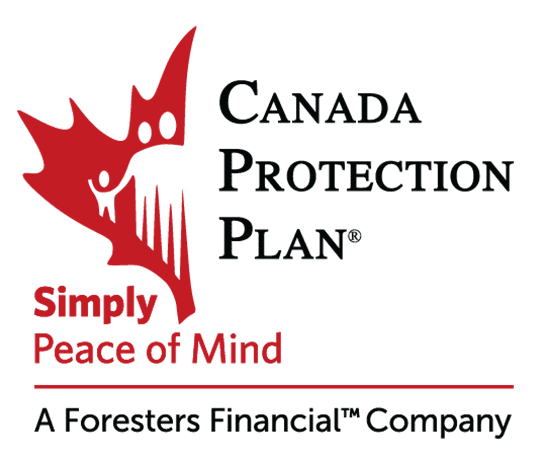
By Dwarka Lakhan | Investment Executive
Help your clients avoid these common misconceptions and missteps that can put their retirement at risk.
Although retirement expectations vary widely, most clients look forward to what they perceive as a comfortable retirement.
For some, planning for retirement is all about having sufficient money to last them through their golden years. For others, retirement is about maintaining an emotionally and physically healthy lifestyle, which involves both financial planning and lifestyle planning.
Regardless of your clients’ expectations, the path to a comfortable retirement is fraught with risks, challenges, myths, mistakes and misconceptions. If you don’t help your clients address these potential stumbling blocks early on, their retirement dreams could be badly compromised.
Your role as a financial advisor is to help your clients understand the potential risks they face, dispel the myths and beliefs they may hold, and help them avoid making mistakes that can derail their plans, in both the accumulation and deaccumulation phases of retirement planning.
Myth: Retirement Begins At 65
“Retirement has become a more fluid concept and clients should be more flexible in choosing to retire at a certain age,” says Matthew Williams, senior vice president, institutional and client services, with Franklin Templeton Investments Corp. in Toronto.
For older generations, age 65 was the “magic number” for retirement. But with people living longer, a phased retirement – during which clients may engage in part-time work, work at a reduced pace or pursue a “dream job” such as consulting after age 65 – may be the answer. Although these choices may not be ideal for your clients, making them aware of alternative retirement options is important.
“In the old days, people retired at 65 and probably lived for only another 10 years or so,” says, Francis D’Andrade, vice president, private client services, with Forstrong Global Asset Management Inc. in Toronto. “[Now], you probably have one-third of your life left after age 65.”
In fact, the average Canadian male lives for 22.6 years beyond the traditional retirement age of 65; the average Canadian female lives for another 24.5 years.
Increasing longevity is one of the primary financial risks clients face in retirement. They run the risk of outliving their money or having to adjust their planned retirement lifestyle to accommodate a reduced income, which may have to be stretched over a longer period.
Myth: The Government Will Provide
Clients must be aware that they could face unplanned expenses, such as increasing health-care costs and the need for long-term or assisted care as they get older, Williams says. There are likely to be other large expenses, such as home repairs, which could also place undue stress on clients’ retirement funds.
Clients often mistakenly believe that various levels of government will cover all their health-care and associated expenses.
Heather Holjevac, senior wealth advisor with TriDelta Financial Partners Inc. in Oakville, Ont., says long-term care in a reasonably comfortable facility can cost as much as $60,000 a year, which can be a huge drain on a retirement portfolio.
Some clients anticipate lower expenses during retirement and, in some cases, they may be correct. Some of the costs associated with working – such as clothing, transportation and meals – will drop. But in many cases, Williams says, clients will spend more in retirement as expenses for travel, recreational activities and home renovations may rise. Either way, clients must understand the importance of budgeting.
When determining how much money is enough for retirement, there is no “magic number,” says Prem Malik, investment advisor with Queensbury Securities Inc. in Toronto. Each individual is different and a client’s desired retirement lifestyle will determine his or her financial needs.
Myth: “If I Begin Late, I Can Catch Up”
The way clients invest for retirement is key to ensuring that they have sufficient funds to last them a lifetime.
“On their own, most clients don’t have a process in place,” D’Andrade says.
For example, some clients believe they can begin saving late, then play catch-up to save sufficient funds for retirement. Some set their sights on accumulating a certain dollar amount – say, $1 million. Still others have expectations of unrealistically high returns from their investments.
Make sure your younger clients understand that beginning early in investing for retirement is crucial. Your clients’ investments will benefit more from the power of compounding returns the earlier they start to invest.
Mistake: Investing Too Conservatively
One of the biggest mistakes some clients make is to invest more conservatively as they draw closer to retirement. They fear losing the money they have accumulated and, consequently, reduce the risk in their portfolios by reducing their exposure to equities and investing in fixed-income products instead.
You need to make clients aware of the hazards of investing in low-risk, low-return fixed-income assets, Holjevac suggests. When you take into account inflation and taxes in this low interest rate environment, clients who invest in low-yielding investments could end up with a negative real rate of return. This strategy poses a bigger risk than investing in equities because a client could run out of money sooner by investing too conservatively.
Instead, your clients should have a balanced portfolio that includes exposure to equities for long-term growth – because some clients may spend more years drawing down on their retirement funds than they spend on accumulating those funds.
Although investing in some equities is advisable at all stages of retirement, remind your clients that no one can predict the behaviour of the financial markets and how it will affect their retirement portfolio.
A decline in the markets during the early years of retirement can lead to depletion of the assets available for later retirement years. For example, if a client loses 10% of the value of a portfolio worth $100,000 early in retirement, only $90,000 will be left to grow in the portfolio to support future retirement years.
Although clients can use a variety of strategies to reduce market risk, Malik suggests using a tiered investment approach: assets required to meet financial needs for the first five years are invested in short-term securities; those to be cashed out in the next five years are invested in equities and fixed-income; and those not needed for 10 or more years are invested in equities.
When making investment decisions, you must ensure that your clients’ portfolios are structured to generate sufficient income to meet their expenses at the various stages of retirement. This is an important risk that should be avoided, Williams says.
Myth: “My Inheritance Is My Retirement Plan”
A significant myth among pre-retirees is that the wealth transfer from parents and grandparents will secure their retirement, Malik says. Some clients are in for a rude awakening when they find that their parents plan to spend as much as they can while they’re alive.
In fact, the intergenerational transfer of wealth is loaded with uncertainties. Factors such as increasing longevity, rising health-care costs and taxes can deplete the value of portfolios your clients expect to inherit.
Williams sees the wealth transfer as a “real risk” in which the value will be heavily discounted. Some elderly clients, he says, are spending too much.
Holjevac adds that many people have debt and mortgages heading into retirement, which means that there will be less to leave to their children.
Conversely, elderly clients may be gifting too much to their children too soon, putting themselves at risk of having insufficient funds during retirement, she says.
Mistake: Ignoring Insurance
Another mistake some clients make is paying insufficient attention to insurance, Williams says. The older clients get, the higher the probability of disability and critical illness and the need for long-term care, says Malik. Clients should understand that insurance can help offset the cost of these potential life events and prevent the need for dipping into retirement savings.
In addition, life insurance can offset the costs of probate fees, income taxes on deemed dispositions and other expenses related to estate planning – costs that can be a burden on a client’s family.
Many clients think of retirement saving as a “current expense for a future benefit, with no instant gratification,” D’Andrade says. That’s why they tend to have a short-term focus when planning for retirement. Thus, it’s your role to bring clients in line when developing their long-term retirement plans.
The key to successful retirement planning, Malik says, “is to develop a trusting relationship with clients so that they can discuss all issues with you and know that you will come back with unbiased, honest advice.”







